Release 6.1.0-Warcraft for Onesait Platform
Last Friday 19th July we released version 6.1.0 of Onesait Platform, which we have named ‘Warcraft’, thanks to the invaluable help of our Community, and following the versioning policy we have established.
This release corresponds to the second version of 2024, which includes a lot of improvements as well as functionalities and tools. All this is defined within the work defined in our 2024 roadmap.

As usual, here are the new features and improvements in this version, and after the summer break we will be analysing each of these new features in more detail.
New Features
DevOp Tools as a new module of the Platform
In this release we have added a new module to the Platform called ‘DevOps Tools’, which includes a set of CI/CD tools for Platform installations where these tools do not exist or are not accessible.
It is important to note that this module does not replace Onesait DevOps and that it is intended for use in a Platform project environment and not as a DevOps solution in an organisation.
The DevOps Tools module includes among its tools:
- Gitlab, as a centralised code repository:
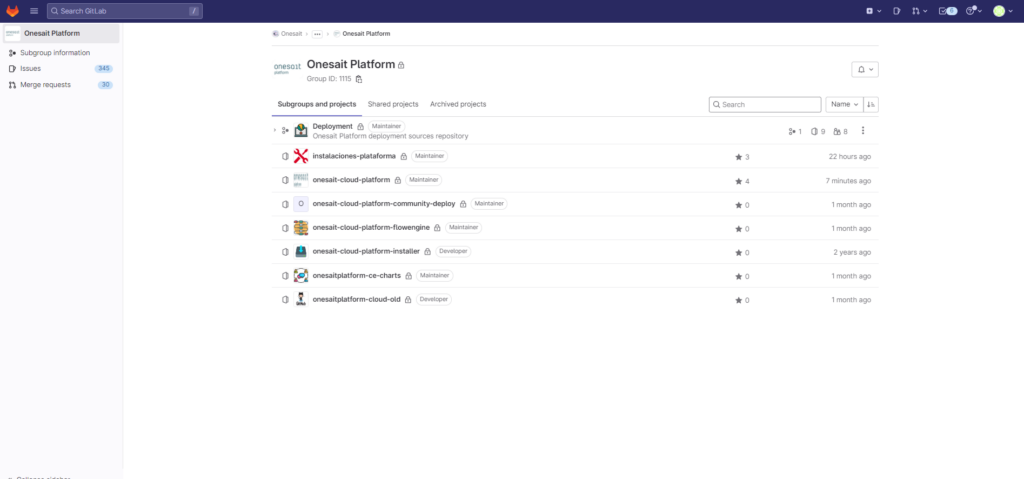
- Jenkins, as a software build automation server:
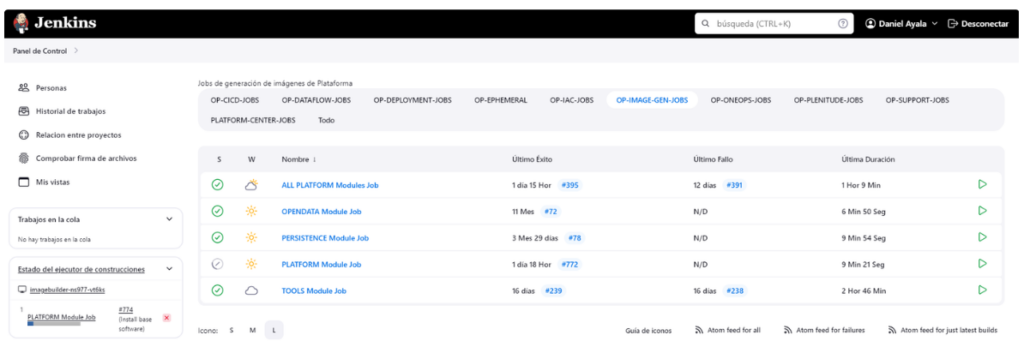
- ArgoCD, as a Kubernetes distribution tool:
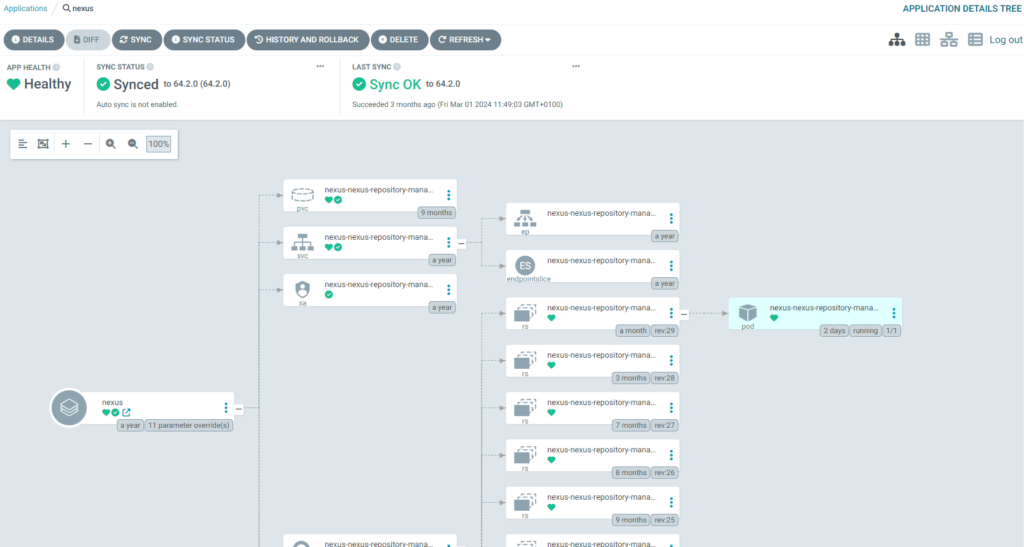
- Docker Private Registry, as an image repository:
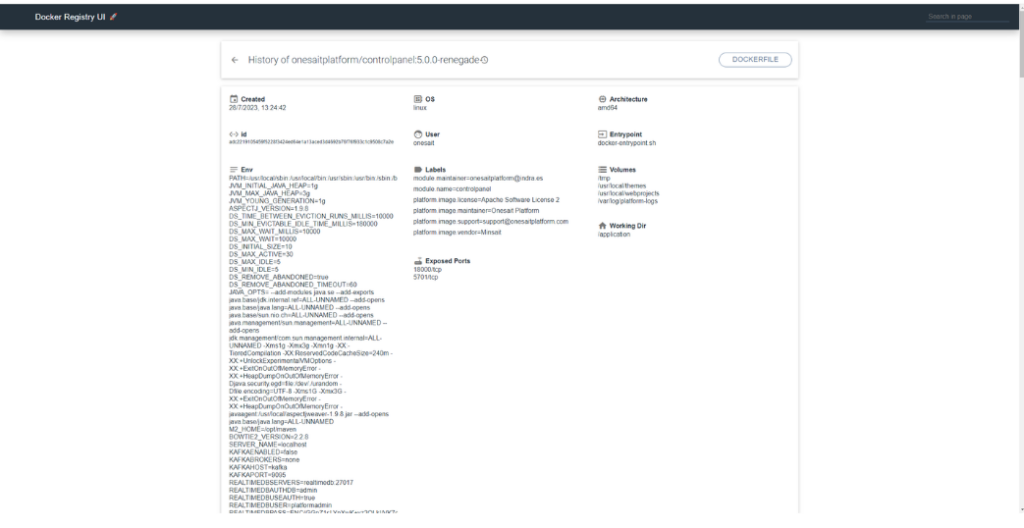
- Nexus, as a repository of artefacts:
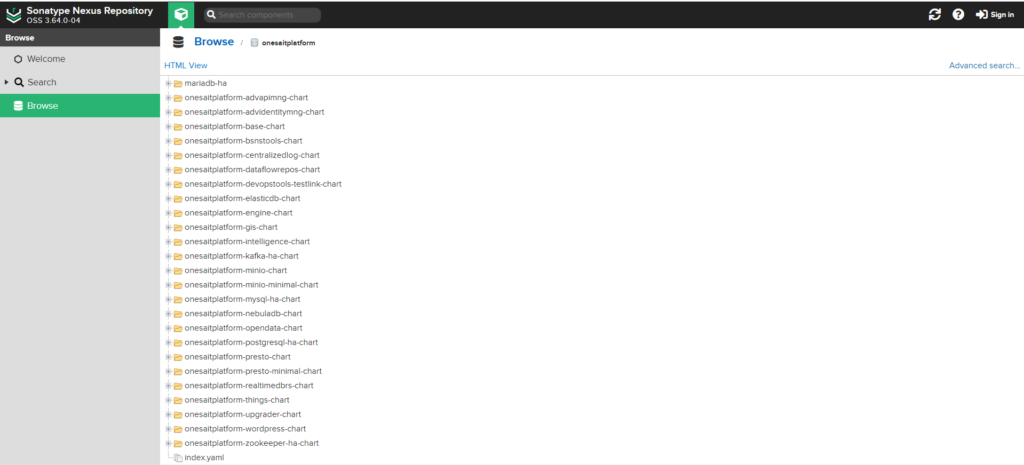
This article (in Spanish) in the Developer Portal expands on the integrated parts of DevOps Tools.
New version of Digital Twins
The Platform has supported the concept of digital twins for several versions, allowing the modelling, development, deployment and orchestration of these.
At the time we opted for Mozilla’s proposal with its WebThings, which in the W3C Web Of Things update has been standardised in this area, so we have decided to change the standard supported by the Platform, and from this release onwards the Platform’s Digital Twins are based on WoT (W3C Web Of Things).
On the other hand, we have made the change practically transparent, adapting the implementation to the concepts used by WoT, as in the creation of the ‘Template’ (in WoT, the Thing Description).
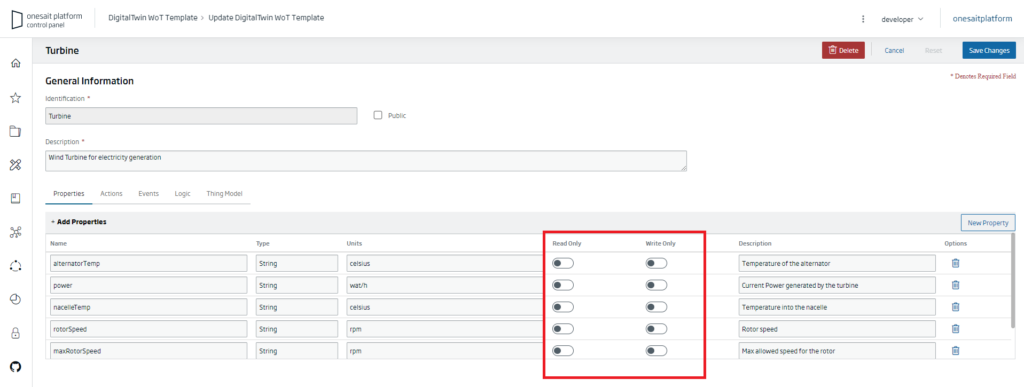
From which we can create the Digital Twin (in WoT the WoT Thing).
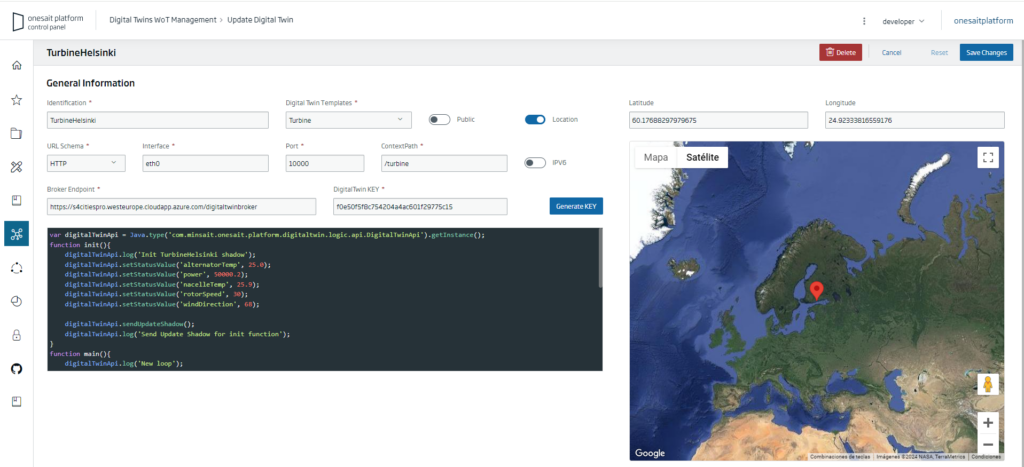
We explain it in detail in this article (in Spanish) we have prepared on the Developer Portal.
New diagram concept
This functionality allows us to create diagrams from the Control Panel, which are associated to an application and allow us to describe different aspects of it, for example, the use cases, logical architecture, deployment architecture, etc.
We can access these from the Diagrams option that appears in the application, where we can see the diagrams created and we will be able to create new ones:
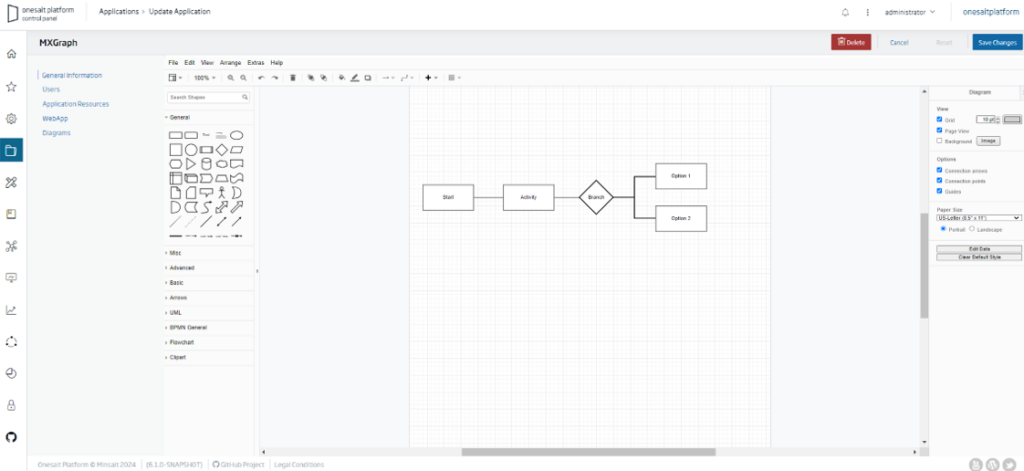
You can find more information in this article (in Spanish).
Smart Data Models Support
The availability of widely adopted information models (de facto standard) is key to creating a market for interoperable solutions across multiple domains. Data Models play a crucial role because they define the harmonised representation formats and semantics that applications will use to both consume and publish data.
Smart Data Models is a joint collaborative programme to support the adoption of a common reference architecture and compatible common data models to support a digital marketplace of interoperable and reproducible smart solutions.
Onesait Platform is data model agnostic by design and therefore has always had the ability to use any data model, including Smart Data Models. From this version onwards, the Platform comes preloaded with different Smart Data Models so that they can be used directly.

And create Entities from these Smart Data Models:

This article (in Spanish) explains in detail how to use these Smart Data Models in the Platform with a complete example.
Mailbox Management
In this release we have incorporated a mailbox manager, so that each user can create their own mailboxes.
A new menu option has been added, called ‘Mailboxes Management’, which shows a list of the user’s mailboxes.
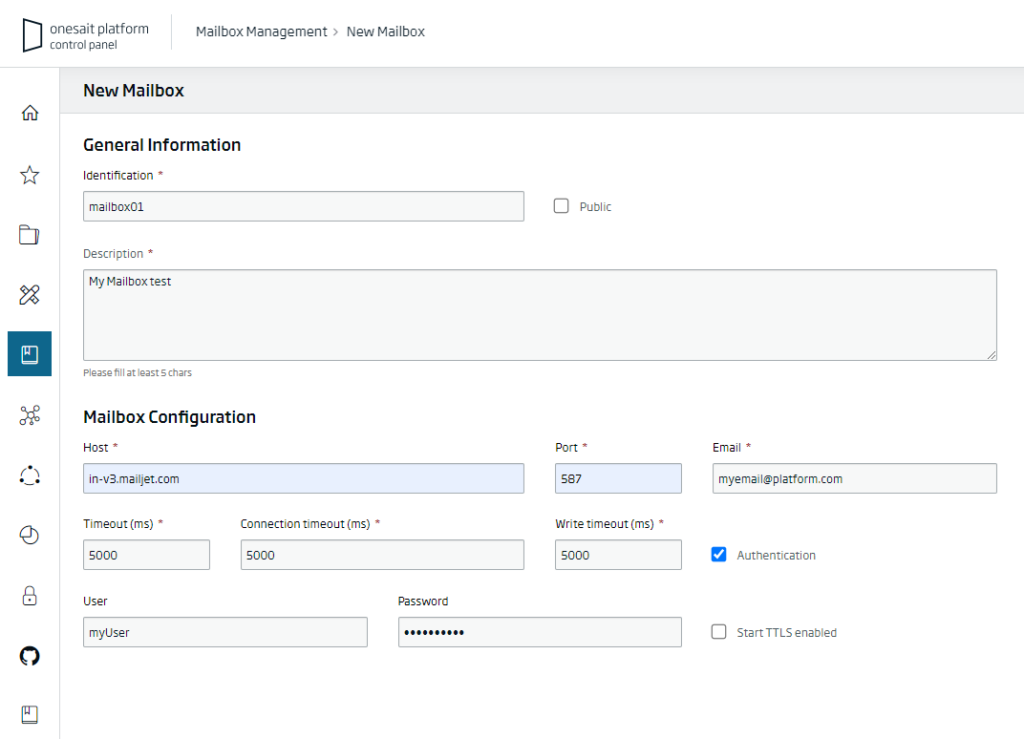
More information can be found in this article (in Spanish) on the Developer Portal.
Improvements and new assets
In addition to the new features mentioned above, version by version we incorporate to the Platform improvements in existing parts, new assets, and of course the resolution of all the incidents detected in the quarter.
Among these improvements we would like to highlight the following.
Enhancements to the DataFlow module
From version 6.1.0 onwards, we have implemented SSO with DataFlow, so that at the Streamsets level, it will be the Platform users themselves who register all the operations carried out, instead of doing it with the application’s own users.
This allows us, among other things, to have greater control of who executes what, for example, we can see both in the logs and in the execution history who executes each process:
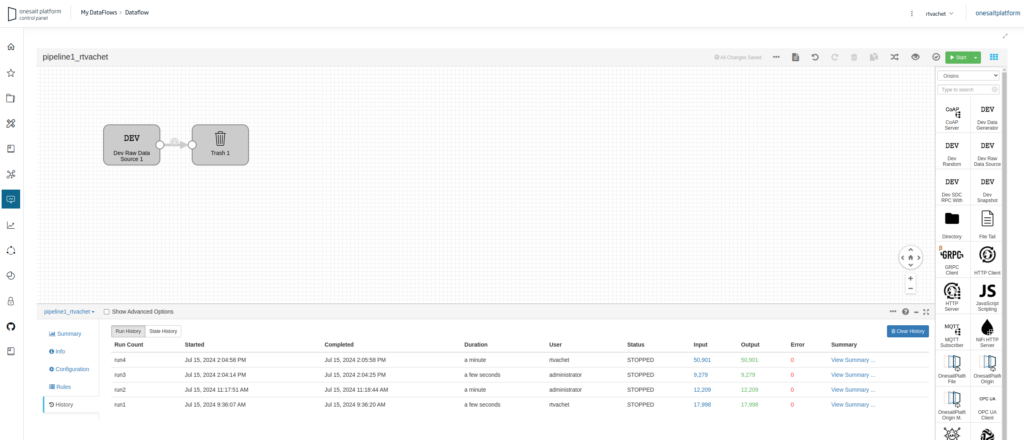
We discuss this in detail in this article (in Spanish) on the Developer Portal.
Identity Manager enhancements on Keycloak
As from release 6.0.0 of the Platform, Keycloak is our only Identity Manager, certain functionalities have been implemented in Keycloak that until now we only had in our basic Identity Manager:
- Registration of new users.
- Password reset.
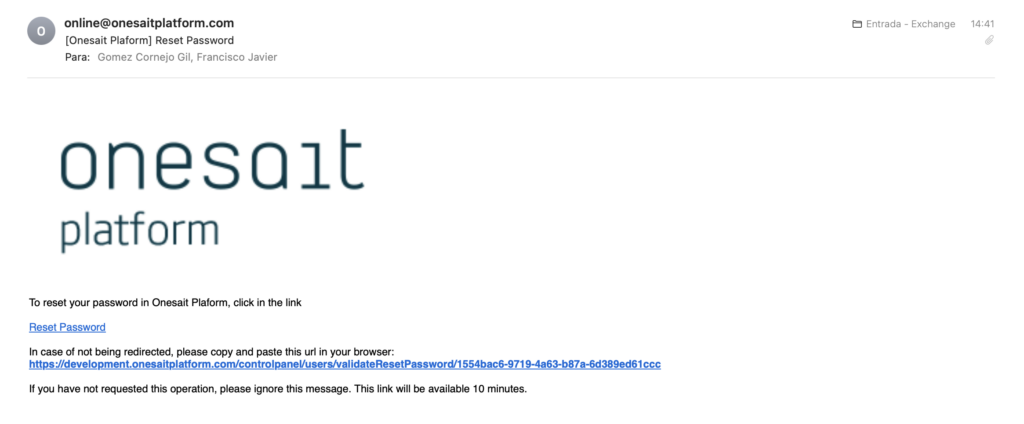
- Improved error display.
- User lock after retries.
You can find more information in this article (in Spanish) we have prepared.
Improvements to OP Forms
In this release we continue working on increasing and improving the functionality of the OP Forms, and we have improved the behaviour of different components. All the changes are discussed in this article (in Spanish).
New version of the Documentation Tool
The new version of the documentation tool is now more usable, powerful and configurable:
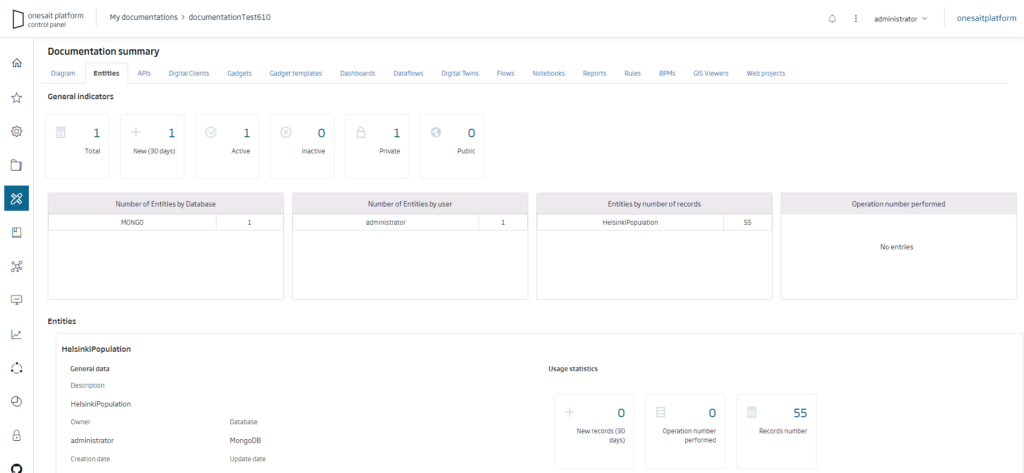
More details can be found in this article (in Spanish) on the Developer Portal.
New version of the Web Template
In this release a new version of the Onesait Platform Web Template has been created, which is labelled as ‘2.0.0-RELEASE’, and which incorporates the following improvements and additions:
- New component for user management.
- New component for Dashboards management:
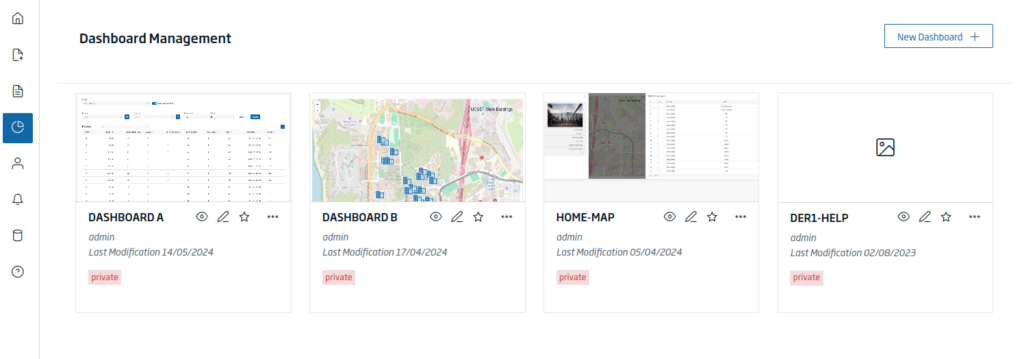
- Notification management:
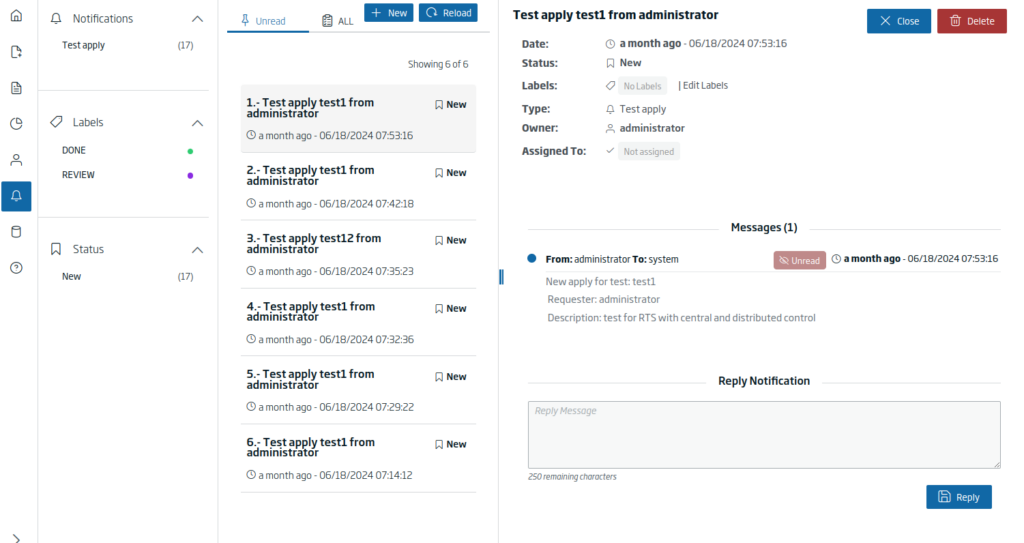
We explain it in more detail in this article (in Spanish) we have prepared.
Example of the use of Forms in different Front technologies
In this release we have created several example web applications where the OP Forms of the Platform are integrated using various Front technologies, such as Angular, Vite + React and Vue 2, which allows us to verify that we can embed the forms of the Platform with any web application.
The applications include a login to the Platform, displaying a list of forms, access to a form listing elements and displaying and editing an element:
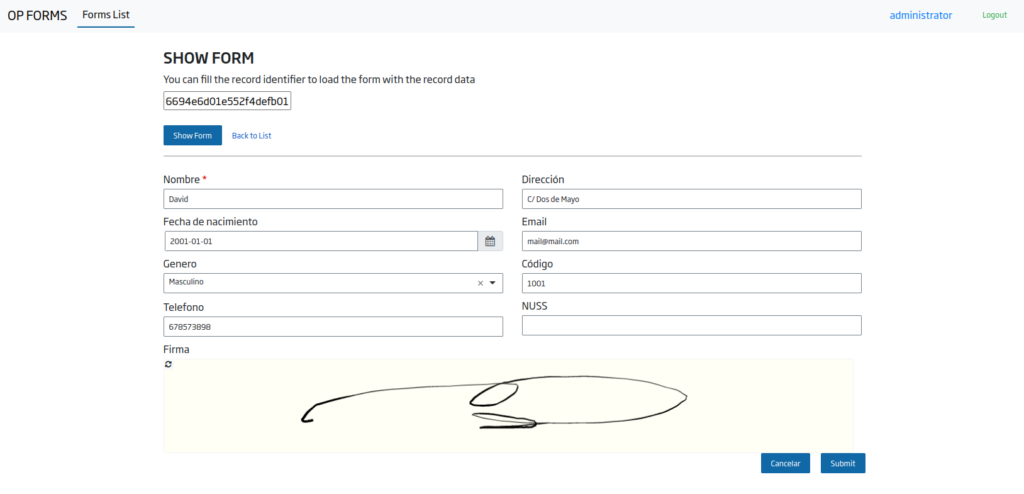
This Developer Portal article (in Spanish) explains in detail how to run the examples and the integration with each technology.
Using ZGC
In this release we have been testing and supporting the new Java Garbage Collector: ZGC, which allows to minimise JVM pause times making it very suitable for low latency and high throughput applications.
From this release onwards, this Garbage Collector can be enabled for environments that require it.
Community
Release 6.0.0-ce released on GitHub
Version 6.0.0 Community Edition of the Platform is now available in our GitHub repository, where you can download and test it for free.

Updated Onesait Platform Lab environment
Onesait Platform’s CloudLab, our experimentation environment, has been updated to version 6.0.2-Vegas, which includes all these functionalities and features (in Spanish).
In addition, we have updated several of the tools used in the CloudLab.
File with link to the open source software versions
From this release onwards, together with the publication of the Community version, the file THIRD-PARTY-EMBEDDED-VERSIONS.txt will be published, which contains the complete list of open source software embedded in the Platform together with the currently integrated version.
An extract from this file is shown in the image:

Updating the documentation of the Developer Portal
We continue to work on improving the documentation of our Developer Portal, updating the visual changes that we have been incorporating in past releases and adapting the contents with new examples that make it easier to follow the explanations.
We are currently working on the documentation associated with OP Forms, in which you will be able to see the changes we are introducing, as well as the documentation related to Onesait Platform data models, which we have reorganised and updated.
Finally, we have created a complete post explaining how we have used the platform to connect with Gaia-X and IDSA data spaces (in Spanish).
As you can see, this release brings with it a lot of improvements and additions, which we will be analysing in detail in September, when we come back from the holiday period.
We hope you found this release interesting and, if you would like us to explain any of them in particular or if you are interested in seeing a live demonstration of how any of them work, please do not hesitate to contact us at our support email: support@onesaitplatform.com

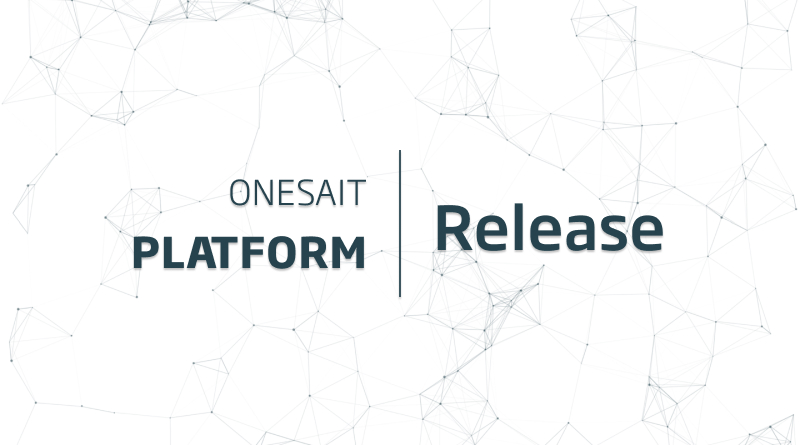
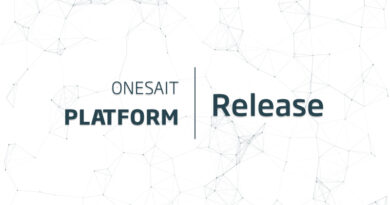

Pingback: Smart Data Models support in Onesait Platform – Onesait Platform Community
Pingback: New mailbox manager in Onesait Platform – Onesait Platform Community
Pingback: New Java-based garbage collector – Onesait Platform Community